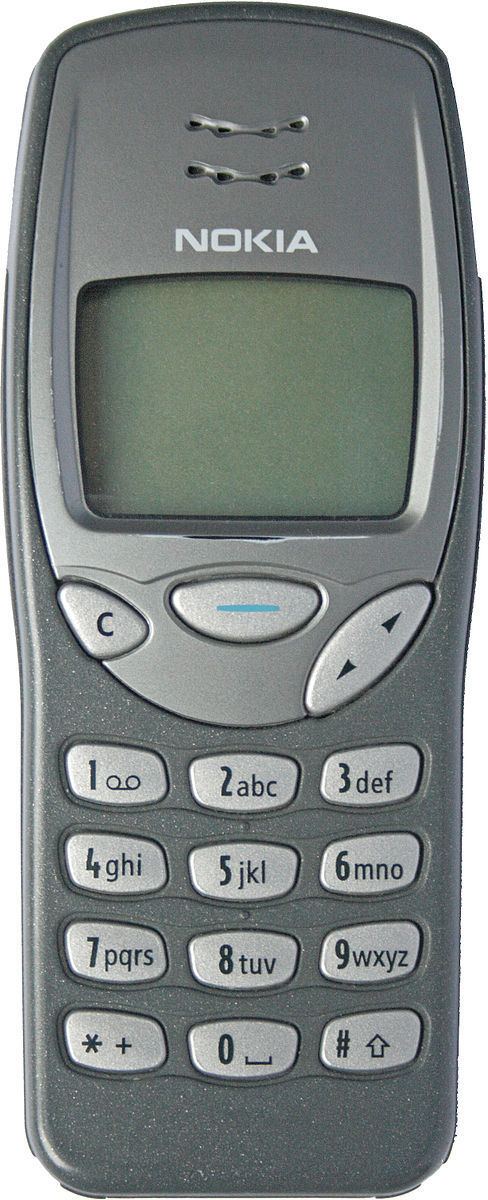The Nokia 3210 is a GSM cellular phone, announced by Nokia on March 18, 1999. With 160 million units sold, the 3210 is one of the most popular and successful phones in history.
The Nokia 3210 has a total weight of 153g. The handset measures 123.8mm x 50.5mm x 16.7mm (min), 22.5mm (max) and features customizable fascias which clip on. It was the first mass market phone with an internal antenna, after the feature had been introduced by Nokia on the luxury phone 8810 in 1998. The 3210 was designed by Alastair Curtis in Nokia's Los Angeles Design Center.
Three games came preinstalled: Snake, Memory (pairs-memory game), and Rotation. The addition of such games encouraged high sales within a youth market which was enlarging at a very fast rate. Some versions of the 3210 included the "hidden" games React and Logic. They were activated by special software using a data cable.The 3210 was one of the first mobile phones to feature an internal antenna. This distinguished the handset from others which featured large, awkward and unsightly antennae. Reception, although poorer than that of its predecessor, the 3110, was still very good.'Picture messages' sent via the SMS texting service were implemented in the handset, allowing users to send preinstalled pictures to one another. These included a 'Happy Birthday' picture amongst others.The phone allowed creating single channel ringtones via internal software. It was possible to send the ringtones to another Nokia phone.The handset was competitively priced and aimed specifically at teenagers and young professionals. This was at a time when few young people had access to a mobile phone, being generally identified with older professionals and business people.The 3210 was originally designed with a vibrate alert function. Nokia decided not to implement this feature on some handsets within certain jurisdictions. A few months after its UK release, some mobile phone repair shops offered customers a handset upgrade to the vibrate function for a small fee.Handset specifications
Standby Time (hrs): 55-260Talk Time (mins): 180-270Charge Time (hrs): 4Ringtone ComposerDual Band: YesVibrating Alert (optional)Speed Dialing3 GamesInternal AntennaGreen back lightInterchangeable FasciasA combination of cutting-edge features such as internal antennas and T9 ensured the 3210 huge commercial success. The 3210 can also attribute much of its success to an advertising campaign aimed predominantly at young people, a first in the mobile phone industry. The inclusion of 3 games, changeable covers, an internal antenna, customisable ringtones and competitive prices led to the handset's huge popularity with those aged 15–25. It was also thinner than previous Nokia models.

